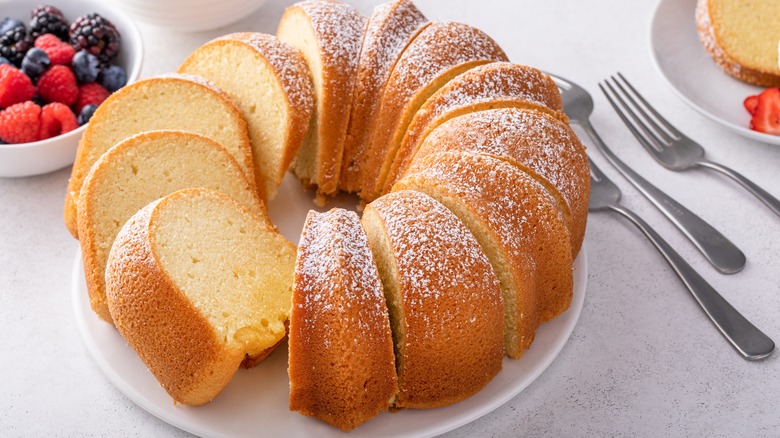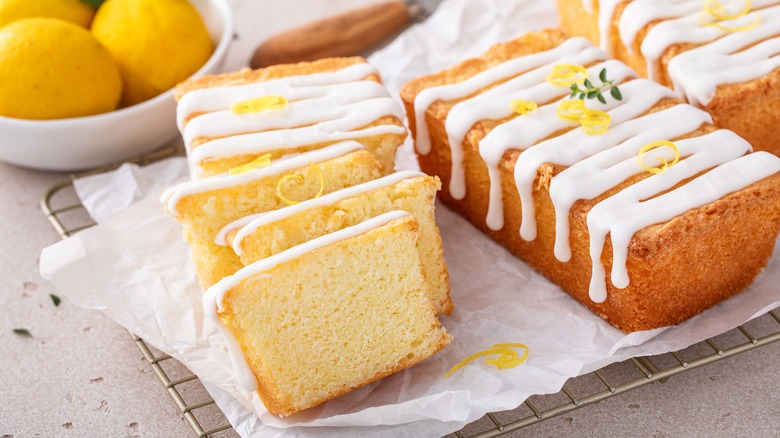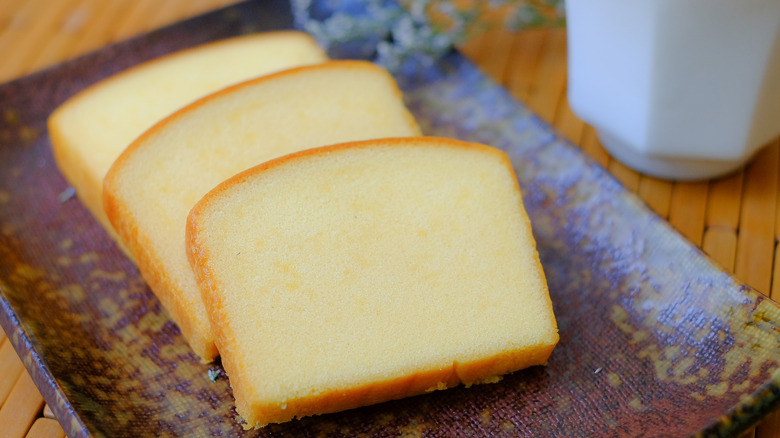Pound Vs Butter Cake: What's The Difference?
When it comes to cake, sometimes it's unnecessary to ask questions. Just slice, serve, and smile. That said, for those true cake enthusiasts, it can be helpful to understand the distinctive personalities of different styles — especially when they are quite close at a glance, as is the case with butter and pound cakes.
Both of these can be considered snacking cakes, both are super versatile, and both can grace the table at just about any time of day, for any occasion. They can be dressed up (think pound cake grilled and served with balsamic strawberries) or simply served in their pure and basic forms. They use many of the same ingredients, and for that reason, have a similar flavor profile; instead, the main distinction comes down to consistency.
While you can expect a decadent taste and tender crumb in both cases thanks to a shared reliance on butter and eggs, pound cake is a denser, more squat product. Butter caked has more of an expansive feel, as air is one of the major ingredients in its recipe, whipped in during the creaming process and retained thanks to leaveners like baking powder.
Ingredient influence
Classic buttery pound cake recipes call for butter, eggs, flour, and sugar, and the name comes from the idea that at some point in history, these cakes were actually made from a full pound of each and nothing more. Today's versions have been adapted, not only for size (as you may not always need a four-pound cake), but for flavor, function, and dietary preferences. And yet their signature remains a more compact consistency which drives home a richness of flavor.
Butter cake also requires those same core ingredients, but its airy quality — which comes from leavening — is really the distinguishing factor. That said, many modern pound cake recipes now call for some kind of leavener as well, which means the line between pound and butter cakes is a bit more blurred.
Further complicating the comparison is the fact that today's bakers have gotten very creative with their interpretations. Many recipes for both now include milk or buttermilk, some make substitutes or additions like sour cream or yogurt, and you can find options that are vegan, gluten-free, and even some made with protein powder.
Ingredients, additions, and uses
When making either of these cakes, one of the most important considerations is quality. Because of the simplicity in both cases, selecting the best ingredients will create a superior result. Considering the name, butter cakes really do benefit from a dairy product you'd be proud to highlight. And while you can get into a deep rabbit hole researching types of butter, unsalted is almost always the safest bet, giving you more control over your sodium levels. In either cake's case, some recipes call for cake flour over all-purpose, which will further contribute to a lighter texture. On the sugar front, you can even swap in some brown sugar to create a more caramelized, deeper sweetness befitting of both cakes. Both options are often flavored with lemon and vanilla but are ideal blank canvases for your inspiration, and are ripe for additions like fresh fruit or crunchy nuts.
Given the similarities, some might find these two cakes interchangeable, but they do have their individual strengths. Pound cake is ideal as the base of strawberry shortcake, for example, as its density will help it absorb the sweet fruit juice more effectively. Butter cake, on the other hand, can be a nice light contrast to a rich frosting. Differences aside, it's hard to imagine a scene that isn't enhanced by a slice of either style.


